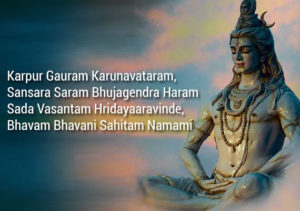Man is a progressive being, a creature of constant growth , before whom lies a limitless ocean of progress to be navigated and conquered only by development and culture of his inherent powers.
The progress of the individual is largely determined by his ruling mental state , because the mind is the basic factor and governing power in the entire life of man.
Attention should be given to the pre-dominant mental state, for it will regulate the action and direction of all one's forces, faculties and powers, the sum total of which will inevitably determine many particular experiences and the personal fate.
The ruling state of mind is made up of various mental attitudes which the individual adopts towards things, events, and life in general. If his attitudes are broad in mind, optimistic in tone, and true to life, his predominant mental state will correspond and exhibit a highly constructive and progressive tendency.
As almost all the forces of the personality function through the conscious mind in one way or another, and as the daily mental and physical acts are largely controlled by the conscious mind, it is obvious that the leading mental state will determine the direction in which the powers of the individual are to proceed.
If his ruling mental state is upward bound , that is, aspiring, harmonious, and positive, all his forces will be directed into constructive channels; but if his state of mind is downward in tendency, that is, discordant and negative, then almost all his forces will be misdirected.
We are prone to believe more than what we see. The evidences of the senses are the only facts that some accept, but now we shall realize more and more that it is what we believe that determines what we shall see. In other words, believing is seeing. More defeats and failures are due to mental blindness than to moral deviations.
If one lived only by physical sight, his world would be very small. It is said of a bug that its world is only as large as the size of the leaf on which it lives, and many times it does not live long enough to consume the whole leaf. With man, if he lived according to the senses, the largest sense he possessed would be that of sight. Thus our whole world would extend only as far as we could see.
If we believed in the testimony of our eyes, we would accept many conditions that are not true. For example, if you look down a railroad track, you will observe that at a certain distance the two tracks converge at one point. This is not true. Have you ever stood on the boardwalk and watched a ship slowly sink into the sea as it sailed away? That ship wasn't sinking; our eyes tell us falsely.
When you are worried over some obstacle or problem, just remind yourself that it may be purely an illusion of the senses, that it may not be true at all, according to the Law.
Did you know that you don't even see with your eyes? Your eyes are like a pair of windows; at the back, of the window there is a reflector and this reflector, in turn, forms an image of what you see and sets up a wave current. This wave current follows along thin wires called nerves. This relays the image back to the brain.
Here at the brain it is referred to the memory center. If the picture is a common one our memory accepts it readily, but if we are looking upon some new picture, some new scene, our memory does not recognize it, and then we must repeat the picture over and over many times until it makes a lasting impression. Therefore, we do not see with our eyes; we see with our mind.
Thought is a subtle element;
although it is invisible to the physical sight, it is an actual force or substance, as real as electricity, light, heat, water or even stone.
We are surrounded by a vast ocean of thought stuff through which our thoughts pass like currents of electricity, or tiny streaks of light or musical waves. You can flash your thoughts from pole to pole, completely around the world many times in less than a single second.
Scientists tell us that thought is compared with the speed of light. They tell us our thoughts travel at the rate of 186,000 miles per second. Our thought travels 930,000 times faster than the sound of our voice. No other force or power in the universe yet known is as great or as quick. It is a proven fact, scientifically, that the mind is a battery of force, the greatest of any known element.
It is an unlimited force; your power to think is inexhaustible, yet there is not one in a thousand who may be fully aware of the possibilities of his thought power. We are mere babes in handling it. As we grow in understanding and in the right use of thought, we will learn to banish our ills, to establish good in every form we may desire. It is our power to think that determines our state of living.
As one is able to think, he generates a power that travels far and near, and this power sets up a radiation which becomes individual as he determines it. Our thoughts affect our welfare, and often affect others we think of. The kind of thoughts we register on our memories or habitually think attracts the same kind of conditions.
If we take the thought of success and keep it in mind , the thought elements will be attracted, for"like attracts like." We are mentally drawn to the universal thought currents of success, and these thought currents of success are existent all around us. We will psychically contact minds who think along the same lines, and later such minds will be brought into our lives. Therefore, successful minded people help success to come to them. That is how successful living is founded.
The Law of mind is in perpetual operation, and it works both ways. Persons who dwell on thoughts of failure or poverty will gravitate toward like conditions; they, in turn, will draw to them people who accept failure and poverty. On the other hand, we can think on positive conditions, on success and plenty, and in the same manner, enjoy full and plenty. What the mind holds within takes its form in the outer world.
Some think that we must deal with two forces; that is, to attract the good we must do away with the bad, but this is not true. For example; if we are cold, we do not work with cold and heat alike in order to get warm. We build a fire, and as we gather around that fire we enjoy the heat that is extended from it and become warm. As we build up warmth, the cold disappears, for cold is the absence of heat. To be warm, we give our whole thought to those things which tend to create warmth; we ignore the cold in thinking of heat and bring forth heat.
Prosperity and poverty are not two things; they are merely two sides of one and the same thing. They are but one power, rightly or wrongly used. We cannot think of plenty and then worry about the uncomfortable conditions that may seem apparent. We think about plenty, and as we think of it, lack, its opposite, will become absorbed or disappear.
All our thoughts must be directed to that one thing which we desire in order that our desire may be fulfilled. Our method is not manipulating two powers, not dealing with good and evil, right and wrong, prosperity and poverty, but as we follow the Law of Good and dwell upon that which is good we shall bring to pass all good things.
The mind force is creating continually like fertile soil. Nature does not differentiate between the seed of a weed and that of a flower. She produces and causes both seeds to grow.
The same energy is used for both, and so it is with the mind. The mind creates either good or bad. Your ideas determine which is to be created. "









